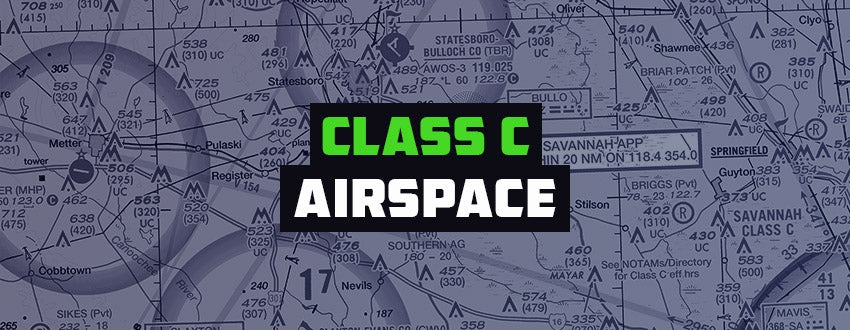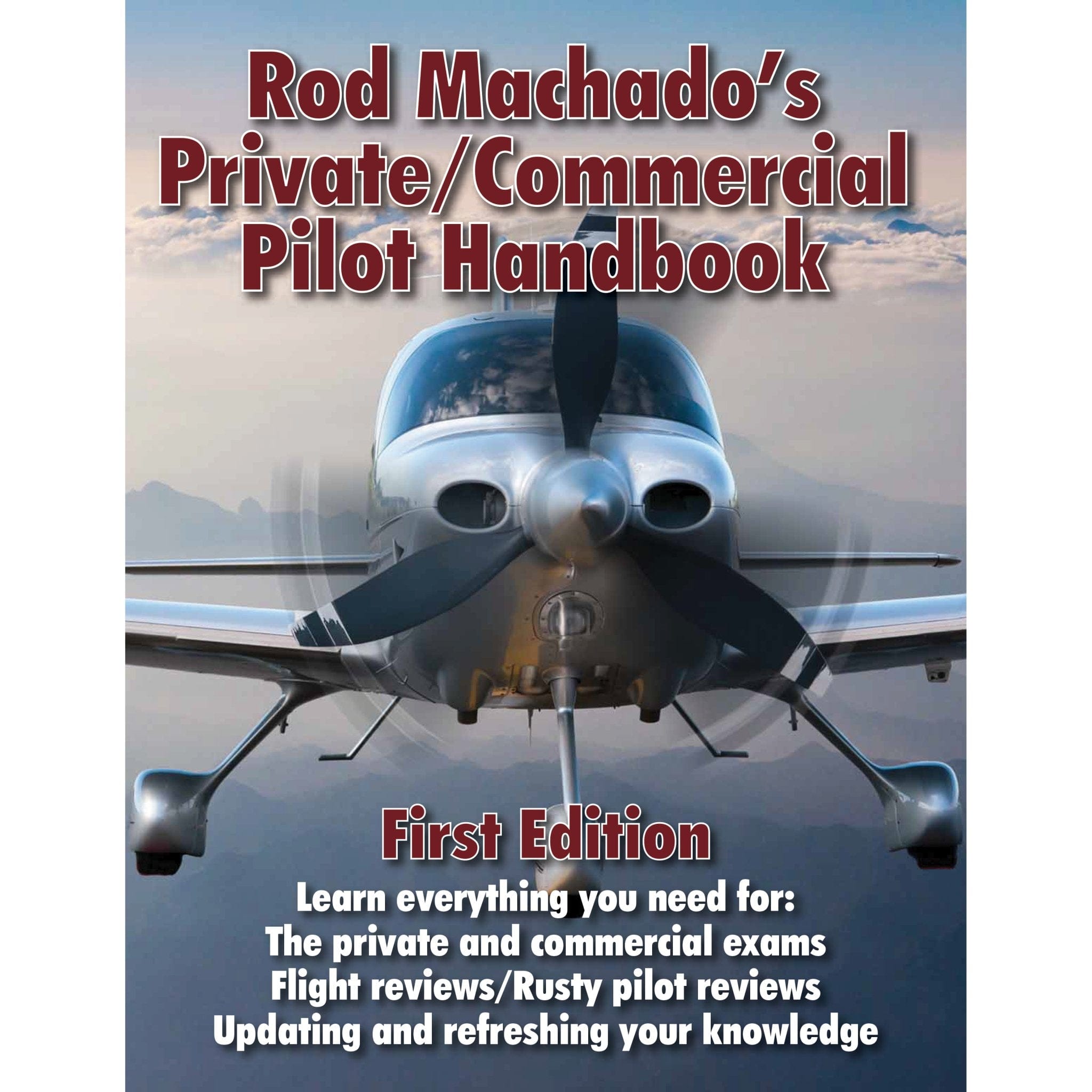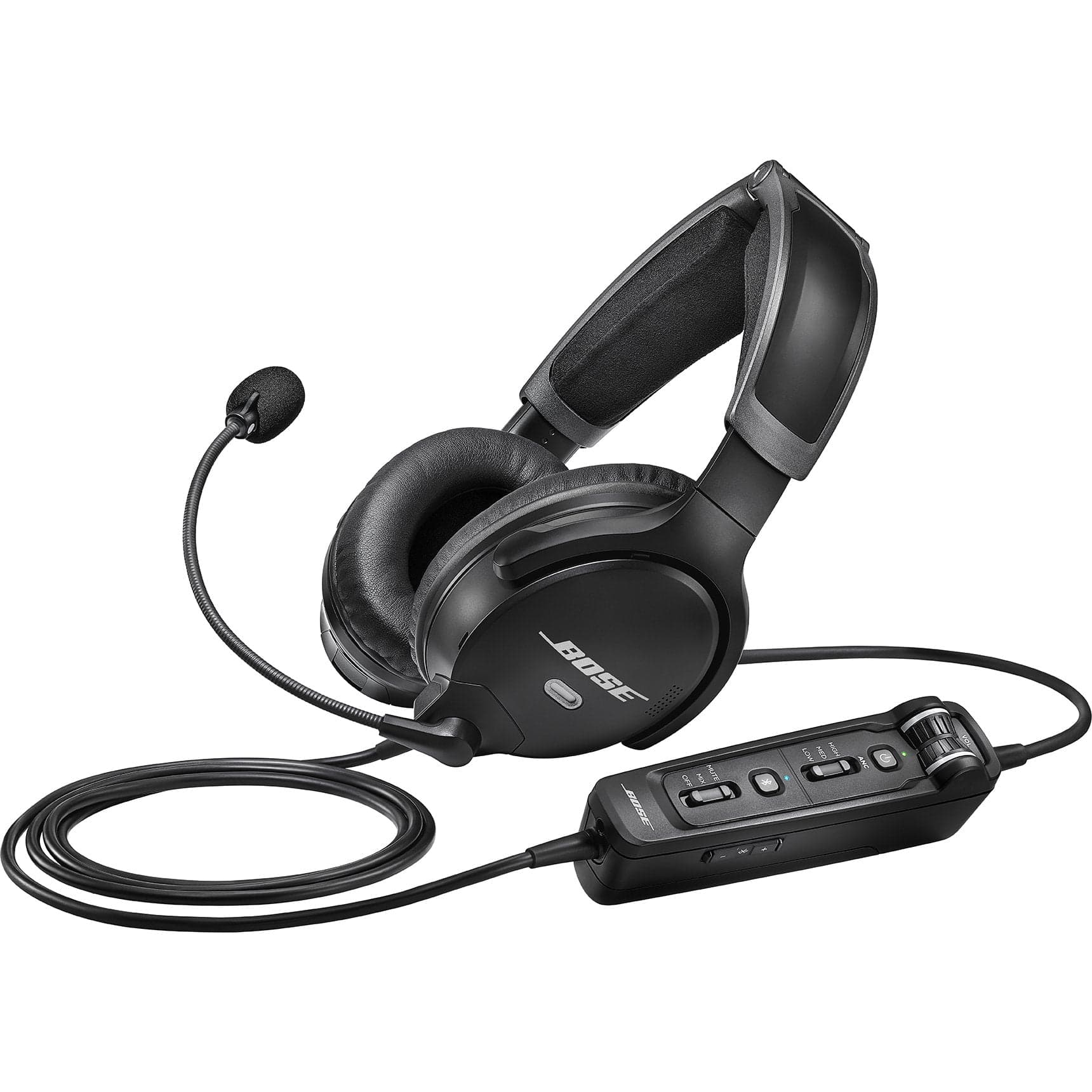When talking airspace, the closer we get to the beginning of the alphabet, the more nervous some pilots become. Each class of airspace moving towards Class A is accompanied by extra rules and regulations that can seem intimidating.
Does that mean that we should avoid flying in Class B or Class C airspace and stick to Class E airspace or maybe even Class G where VFR pilots are not even required to talk to ATC?
Not at all. It may take a little more advance planning and some practice, but it is worth the effort to expand our choices of destination. Once we know what to expect, how to identify, and how to fly within Class C airspace, it will not seem nearly as daunting.
What is Class C Airspace?
Class Charlie or Class C airspace is a busy category of controlled airspace found near mid-size airports that service both general aviation and airline traffic. The primary airport in a Class C airspace has both an operational Air Traffic Control Tower (ATCT) as well as Terminal Radar Approach Controls (TRACON). Secondary smaller airports may also be located within the Class C airspace.
The purpose of Class C airspace is to enhance aviation safety in the terminal area and to decrease the risk of midair collisions by providing traffic separation service. Both Visual Flight Rules (VFR) and Instrument Flight Rules (IFR) traffic can operate within Class C airspace provided they meet the operational requirements and are within weather minimums for their flight rules. With that said, much of the focus of Class C airspace is to prevent traffic conflicts for IFR aircraft.
Within the United States, air traffic operations and the approach control service are essential components of Class C airspace. Pilots and air traffic controllers work together to ensure the safe and efficient movement of aircraft in both the traffic patterns and this controlled airspace.
By closely coordinating approach control and employing established procedures, the United States maintains a high standard of aviation safety within Class C airspace.
Shape of Class C Airspace

Class C airspace has a very distinctive shape often referred to as an upside-down wedding cake because its inner and outer rings stack to look like an inverted layer cake. The inner ring, commonly referred to as the inner core, usually has a 5 nautical mile radius and extends from the surface area up to 4,000 feet AGL.
The outer ring, or shelf area, typically starts at an altitude of 1,200 feet AGL and extends up to 4,000 feet AGL with a radius of 10 nautical miles.
The rationale for the unique shape of Class C airspace is that the shelf area and the inner ring keep aircraft arriving into and departing out of the larger airport safely separated from other traffic.
At the same time, slow, low flying planes can fly underneath the shelf area and outside the inner ring of Class C airspace as they operate out of nearby smaller airports that are not part of the Class C airspace.
This arrangement effectively segregates traffic and allows slower, low-flying aircraft operating in nearby Class G airspace and smaller airports, such as those in Class D or Class E airspace, to remain outside the inner ring of Class C airspace.
How to Locate Class C Airspace

Class C airspace is depicted on VFR Sectionals, IFR En Route Low Altitude, and Terminal Area Charts. Look for two concentric magenta circles representing the inner and outer rings of the airspace.
Inside each will be a set of two bold magenta numbers stacked one on top of each other and separated by a horizontal line that looks like a fraction. The top number is the ceiling of that ring and the bottom number is the floor.
The numbers are in hundreds of feet MSL, so a top number of 40 means that the ceiling of that ring extends through 4,000 feet MSL.
At 4,001 feet you are in a different airspace. A floor of 12 means 1,200 feet MSL. If the airspace extends all the way down to the surface, rather than numbers, the bottom of the equation will read “SFC.”
In rare circumstances, topography can force the Class C airspace to have a non-standard shape like an oblong, but it will still be depicted using the bold magenta lines and fractions that indicate the floor and ceiling of each ring. The nearly rectangular shaped Class C airspace in a valley in Ashville, North Carolina is a good example of an abnormally shaped Class C airspace.
Requirements of Class C Airspace
To enter Class C airspace, all aircraft must meet the following requirements:
- Two-way radio
- Mode-C transponder
- ADS-B Out device
- Establishment of two-way communication with the airspace controller
- Follow speed restrictions
Note that flying below the outer ring, or shelf, of Class C airspace does not require a transponder, but flying above Class C airspace does. Also, as of January 1, 2020, ADS-B out devices like the uAvionix SkyBeacon and tailBeacon are required for all aircraft with an electrical system operating within Class A, Class B, and Class C airspace.
Class C Weather Minimums

Pilots can fly VFR in Class C airspace under the following minimum weather conditions:
- 3 statute miles of visibility
- 1,000’ clearance above clouds
- 500’ clearance below clouds
- 2,000’ horizontal clearance from clouds
If airfield conditions are below minimums but you have at least 1 statute mile of visibility and can remain clear of the clouds, it may be possible to receive a special VFR clearance. In certain situations, this clearance can be requested from ATC and if issued, it allows pilots to fly VFR in an area that is below standard weather minimums.
Restrictions of Class C Airspace

While in Class C airspace, pilots must abide by the following restrictions:
- Maintain two-way radio communications
- Mode-C transponder on
- ADS-B Out device on
- Follow direction of ATC
- Maximum speed of 200 knots within 4 nautical miles and 2,500’ of the primary Class C airport
The controller in Class C airspace is focused on maintaining a safe degree of aircraft separation. To accomplish this, IFR aircraft are kept separated from VFR aircraft using either visual separation, a 500’ vertical separation, or target resolution.
Wake turbulence separation is also provided to ensure that aircraft in different weight classes are not traveling, taking off, or landing too close together. This helps prevent the pilot of a smaller plane from losing control or sustaining damage because of encountering the wake of the larger aircraft.
How to get Approval to Enter Class C Airspace
The approval needed to enter Class C airspace is like Class D in that you do not need a specific clearance, but you do need to establish two-way communication with control. To be able to enter Class C airspace, a pilot must contact ATC prior to arrival. Contact will be made with the ATC facility that provides services for the designated airspace.
Time your initial call so that you have adequate time to establish two-way radio communication before you reach the Class C airspace. Remember that you must have established two-way communications to be authorized to enter the airspace.
Radio Procedures for Class C Airspace
- State your call sign, position, altitude, radar beacon code, destination, and request. Note that controllers in some locations prefer a courtesy cold call first with simply your call sign and that you have a request. This ensures they are ready to copy your information.
- Once the controller responds to you with your full call sign, even if they simply tell you to standby, unless they have specifically told you to standby outside of Class C airspace, you are cleared to enter (provided you meet the other requirements). If the controller asks you to standby without repeating your call sign, you are not cleared to enter.
- Some facilities have an approach control program in place to provide arriving VFR traffic with detailed landing information unless this information is included in the ATIS and the pilot states that they have that ATIS. This program is voluntary but encouraged. You may be asked to contact approach control then switch to tower for further information.
- When departing an airport with an operating control tower in Class C airspace, you must establish two-way radio communications with control prior to takeoff and maintain communications with ATC as directed while you remain in Class C airspace.
- If you are taking off from a nontowered satellite airport within Class C airspace, establish two-way radio communications “as soon as practicable after departing.”
Takeaways
Flying in Class C airspace is not that intimidating once you understand it. Class C airspace is designed to establish and maintain safe separation of mixed general aviation and airline traffic.
It is usually upside-down wedding cake shaped and depicted on charts with two bold magenta rings along with numbers indicating the airspace floor and ceiling within each ring.
Pilots must meet the operational requirements and weather minimums plus establish two-way communication with ATC to fly within the airspace. While in Class C airspace, pilots must abide by the restrictions and continue to meet the requirements.
Since you will be in contact with ATC throughout your time in Class C airspace, it is important to be comfortable and fluent in radio communications. The ASA Say Again, Please: Guide to Radio Communications is an excellent refresher to help you build confidence in this skill. We have a guide called "How to Improve ATC Communication (Guide)" that can help you brush on understanding radio communication skills.









